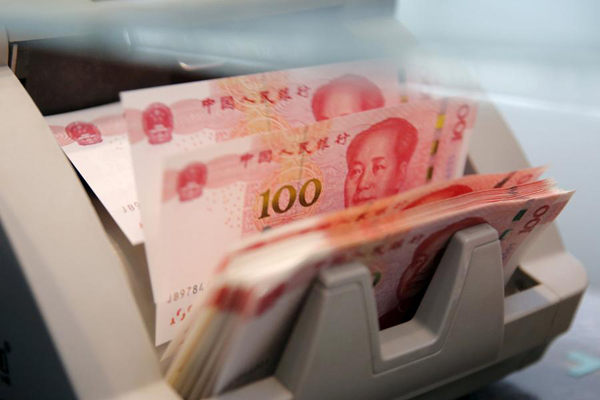CBRC highlights 10 risk types
 |
|
Chinese 100 yuan banknotes are seen in a counting machine while a clerk counts them at a branch of a commercial bank in Beijing, in this March 30, 2016 file picture. [Photo/Agencies] |
China's banking regulator on Monday issued guidelines on risk control for lenders, a move to prevent and resolve any systemic financial risks.
The China Banking Regulatory Commission, in a statement released on its website, said that it will pay attention to 10 types of risks and provide concrete action plans to address major risks.
First, it will strive to strengthen credit risk control. Financial institutions in the banking industry should implement the classification standard and operating process of credit assets and strengthen uniform credit granting and new clients' risk assessment, the CBRC said.
Second, it will make efforts to further fine-tune the liquidity risk control system. Financial institutions in the sector should improve risk monitoring and adopt innovative risk control ways to carry out better planning.
Third, the CBRC will strengthen bond investment business management. Players in the banking industry should master the internal control system for bond trading and strictly control investment leverage of the investment.
The risk control measures also include prevention of risks in the real estate sector, strengthening of controls on local government debt, standardized wealth management and prevention of cross-boarder business risks.
In remarks published on Sunday, Premier Li Keqiang pointed out that the country's financial sector was vulnerable to risks such as bad assets, bond defaults, shadow banking and internet financing, with illegal and corrupt activities becoming frequent.
"The guideline shows that strict regulations will be implemented this year, which is important for the healthy development of the banking industry," said a source at Agricultural Bank of China.
The source, who sought anonymity, further said the guideline included some new requirements because new risks have emerged of late.
"Going by the Sealand Securities case, prevention of bond investment risks is urgently required," said the source.
The reference was to the Shenzhen-listed brokerage that was involved in leveraged bond financing deals totaling 16.5 billion yuan ($2.39 billion) last year.









